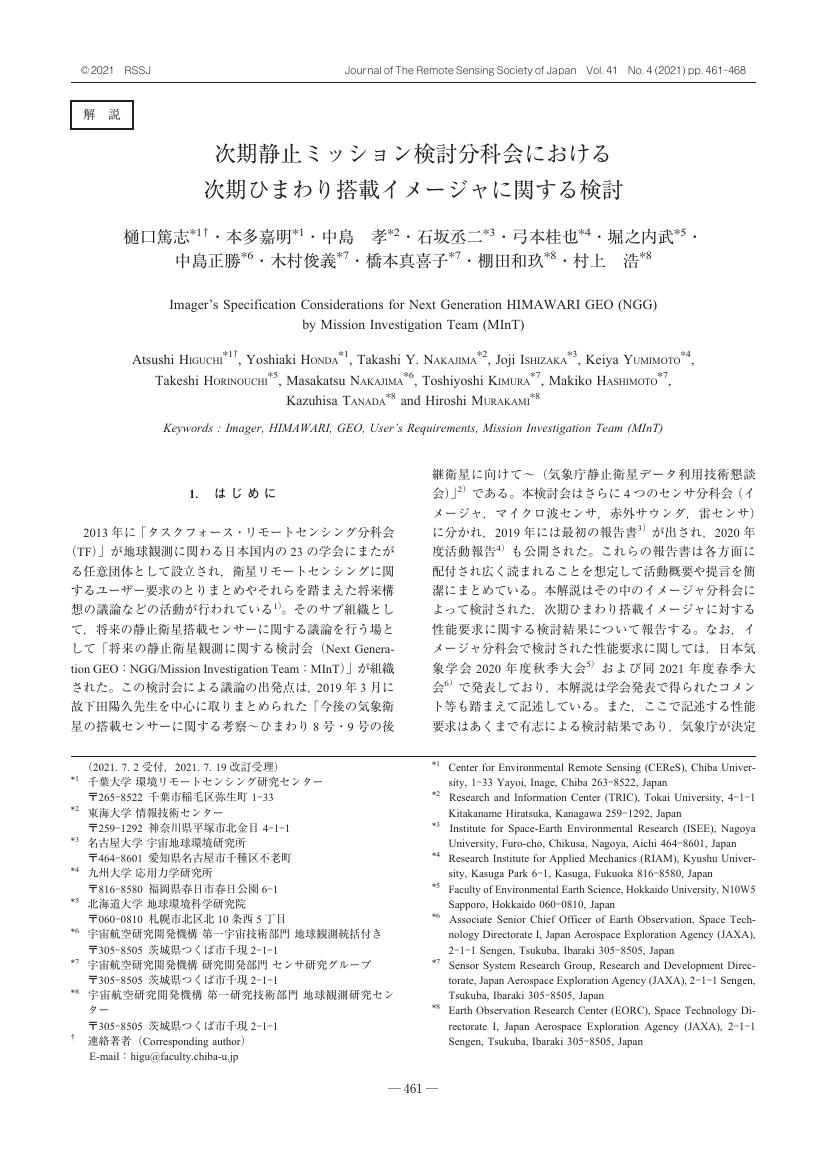1 0 0 0 OA 次期静止ミッション検討分科会における次期ひまわり搭載イメージャに関する検討
- 著者
- 樋口 篤志 本多 嘉明 中島 孝 石坂 丞二 弓本 桂也 堀之内 武 中島 正勝 木村 俊義 橋本 真喜子 棚田 和玖 村上 浩
- 出版者
- 一般社団法人 日本リモートセンシング学会
- 雑誌
- 日本リモートセンシング学会誌 (ISSN:02897911)
- 巻号頁・発行日
- vol.41, no.4, pp.461-468, 2021-09-20 (Released:2022-01-13)
- 参考文献数
- 49
1 0 0 0 OA 高精度画像処理アルゴリズムによる「いぶき」太陽電池パネル挙動計測
- 著者
- 鈴木 悟史 中村 俊之 吉井 正広 中島 正勝 中西 洋喜 本田 瑛彦 小田 光茂
- 出版者
- 一般社団法人 日本機械学会
- 雑誌
- 日本機械学会論文集C編 (ISSN:18848354)
- 巻号頁・発行日
- vol.79, no.807, pp.4233-4248, 2013 (Released:2013-11-25)
- 参考文献数
- 11
- 被引用文献数
- 1 1
Generally, many space satellites have large solar array panels for power generation and large antennas for observation and communication. The panels and antennas must be lightweight because of the payload weight limit of the launch vehicle. So, they are very flexible, with little damping ability. This results in vibrations cause serious problems. When the thermal environment around a flexible structure on orbit such as a solar array panel changes to cold or hot, the flexible structure produces its own deformation or vibration. These occur most often during rapid temperature changes called thermal snap or thermally-induced vibration, which has been known to cause attitude disturbance in Low Earth Orbit (LEO) satellites. Thermal snap vibration occurring on a flexible solar array panel is very slow. It is very difficult to measure thermal snap motion by sensors such as accelerometer. The behavior of a space structure affected by thermal snap has never been observed directly in space so far. This report presents the measurement results of “IBUKI” solar array panel's behavior using monitor camera.
